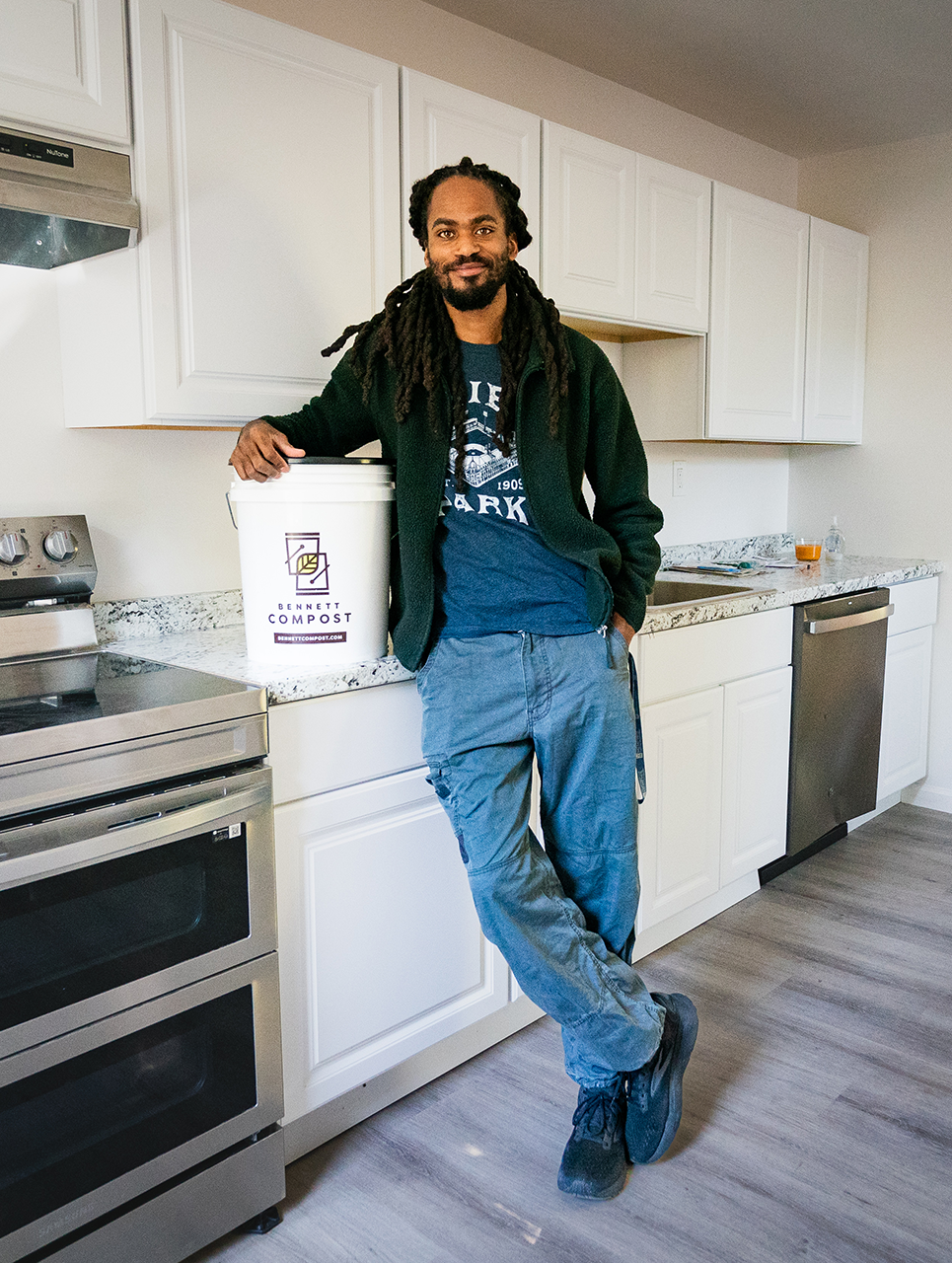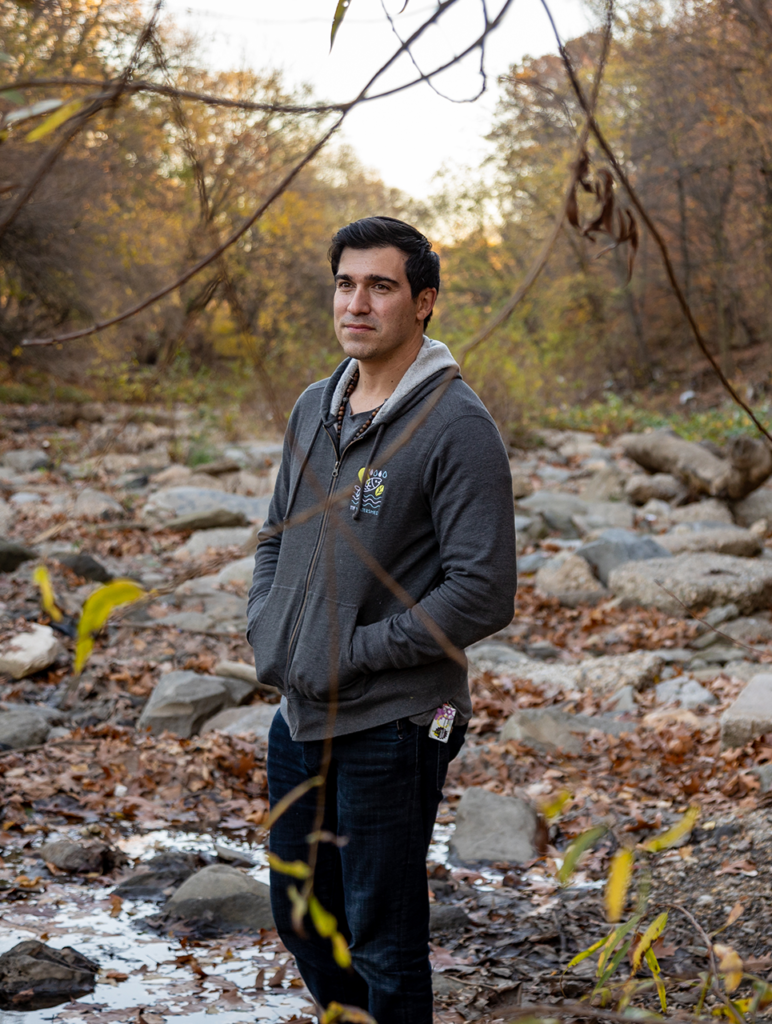Long after the sweltering heat of summer is a distant memory, Heidi Barr is still thinking about light and airy linen — or at least about growing flax, from which linen is made. Barr, a textile artist and costume designer, first became intrigued with the fiber when she was looking for a local linen supplier for her home textiles company and came up empty-handed. Not long after, local farmer Emma de Long contacted Barr and asked her to make her a linen wedding dress, and the two went down a rabbit hole researching domestic linen production. Barr discovered that flax seed first came to the United States with the Dutch and German settlers of Germantown, a Philadelphia neighborhood just 10 minutes from where she lives.
During the pandemic, the two planted a test plot of flax at de Long’s vegetable and flower farm, Kneehigh Farm in Pottstown, Montgomery County. They consulted with growers from the North American Linen Association (NALA), and in 2020 they started the PA Flax Project (PAFP) to organize farmers and create an infrastructure to bring the industry back to America. In January 2024, they were awarded a three-year, $1.7 million U.S. Department of Agriculture Organic Market Development Grant to grow flax for linen and other coproducts on 12,000 acres in the state using a cooperative model where farmers would share in the profits.

“Flax is a sustainable alternative in a really toxic industry, and we can make it in Pennsylvania,” says Barr. As fashion and other industries look for sustainable alternatives to petroleum-based products such as polyester and global demand for the light and breathable textile grows as global temperatures continue to rise, increasing production of low-impact linen is in the news. Organic flax requires little irrigation and no chemicals to process, remediates soil and promotes biodiversity. At the processing mill, it is zero waste, meaning that all parts of the crop can be used and sold. While most consumers think of flax for linen for clothing and home goods, it is also a component in biocomposites designed to replace materials like fiberglass, a use category that is growing.
Flax is a sustainable alternative in a really toxic industry, and we can make it in Pennsylvania.”
— Heidi Barr, PA Flax Project
Setting up an industry in Pennsylvania has been daunting because the institutional knowledge, specialized equipment and seeds have been exclusive to Europe for centuries, but a cadre of small-scale area growers remain undeterred, Barr and de Long among them. Their ambitious goals have drawn the attention of NALA members who see PAFP as the model for expanding the industry in North America.
In the 11 months since the group received the grant, PAFP has worked with the Pennsylvania Department of Agriculture to get flax designated as a specialty crop, thus opening up grant funding for farmers, and has also hired a team of experts: a director of education, Janell Wysock; a director of value chain coordination, Jordan Haddad; a director of development, Evan Reinhardt; and a director of agriculture, Bill Shick. They planted a four-acre test plot at both Pottstown’s Pasture Song Farm, where part two of their three-part producer event series educated farmers on the agronomy of the crop, and Henry Got Crops Farm in Philadelphia. They imported three pieces of harvesting equipment from Belgium, one of three countries (along with France and the Netherlands) where most of the world’s flax is grown. They also traveled to Europe to visit mills and learn from farmers and producers about growing and processing the crop. Locally they are working with partners like Pennsylvania Fibershed, a nonprofit working to connect the fiber and textile communities in Pennsylvania through industry development.

Farmers in the state have expressed interest in growing the crop, and PAFP is working to get the supply chain in place by building a first-stage processing mill in the Philadelphia area. After flax is grown, it has to be processed to be sold on to the global market. Right now flax has to be shipped out of the country to be processed, which is not sustainable. “A common challenge we encounter is the need for more organic markets, which importantly includes adequate processing facilities,” says Catherine Peebles of the Rodale Institute, which supports research into organic farming. “PAFP is addressing this need by building a scutching mill in Pennsylvania, which is vital for developing the fiber flax industry they’ve set out to rebuild.” (To “scutch” is to free usable fibers from a plant’s woody parts by beating.) They will work with farmers “to understand what it takes to grow this crop both agronomically and economically.”
Barr hopes that the mill will be operational by year three of the grant, in 2026. Reinhardt is researching locations and the specialized equipment needed for a mill, and PAFP has launched a campaign to raise the money needed to get it operational, since the mill is not covered by the grant. “The scutching mill equipment and mill building itself will be a considerable expense, and we ultimately want the mill to be self-sustaining and not dependent on subsidies,” says Reinhardt, who says it will almost certainly be covered with a mix of public and private funds.

As year two of the grant approaches, Shick, director of agriculture, is working with researchers from Cornell, Rutgers, Penn State and the University of Delaware to do seed trials to ensure that farmers have access to good seed. “Most modern flax varieties have been bred and selected in Europe, in different climates and soil types. We are interested in seeing how they perform here. We imagine the flax industry will be using both imported and domestically-produced varieties in the future.”
PAFP is also working with Brian George of Thomas Jefferson University to create a nonwoven, 100% flax cloth, and Haddad, director of value chain, is cultivating relationships with buyers for the products — fiber and all the coproducts — that will eventually be sold at the mill.
At a January 2025 growers meeting, experts will educate interested farmers on the agronomy of flax and how best to scale production. PAFP hopes to get commitments from farmers and then support them as they roll up their sleeves and start planning.
“We are reimagining an industry that once thrived in several North American regions and has deep roots in Pennsylvania,” Barr says.









